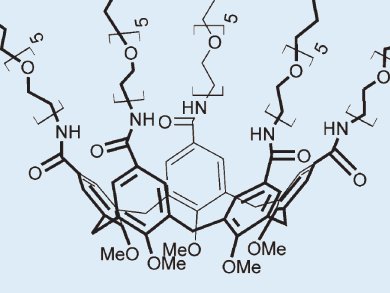Cholera is a serious health problem in the developing world. Approximately 3–5 million cases occur annually. Although several treatments exist, drug resistance and mutations in cholera toxin (CT) mean new treatments are crucial.
CT has a pentameric binding-domain that recognizes cell surfaces, thereby infecting the host. If an inhibitor could prevent binding, disease onset may be avoidable. Han Zuilhof and colleagues, Wageningen University, The Netherlands, Università degli Studi di Parma, Italy, and National Research Council Canada, Canada, designed and synthesized a pentavalent inhibitor based on a calixarene core.
The core has small methoxy groups at the lower rim (pictured), and penta-saccharide units on the upper rim separated from the core by a long linker. In biological tests, the calixarene achieved picomolar potency (IC50 = 450 pM) making it one of the most potent known inhibitors of CT binding.
- Picomolar inhibition of cholera toxin by a pentavalent ganglioside GM1os-calix[5]arene,
J. Garcia-Hartjes, S. Bernardi, C. A. G. M. Weijers, T. Wennekes, M. Gilbert, F. Sansone, A. Casnati, H. Zuilhof,
Org. Biomol. Chem. 2013.
DOI: 10.1039/C3OB40515J



